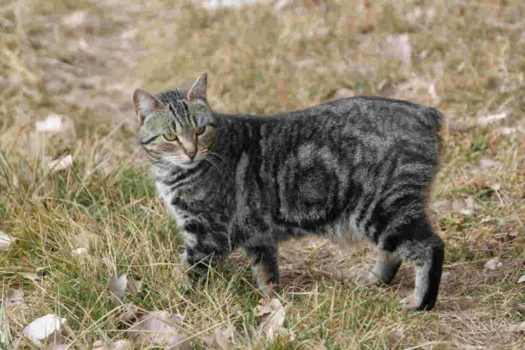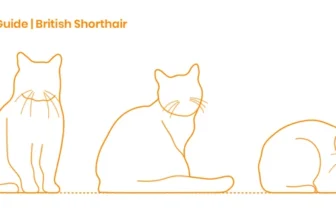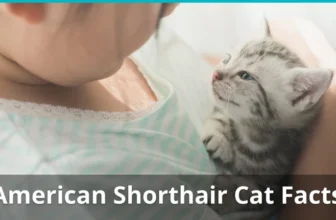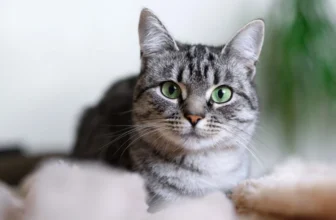Our feline friends are undoubtedly an integral part of our lives. As cat owners, we all wish for long and healthy lives for our furry companions. However, the life expectancy of cats can vary significantly depending on various factors. As such, it’s essential to understand these factors and how they affect the lifespan of different cat breeds. In this article, we take a closer look at the life expectancy of American Shorthair cats and compare it with other popular cat breeds. We also delve into factors that influence feline longevity, and ways to extend the lifespan of your American Shorthair.
Factors that Influence Life Expectancy in Cats
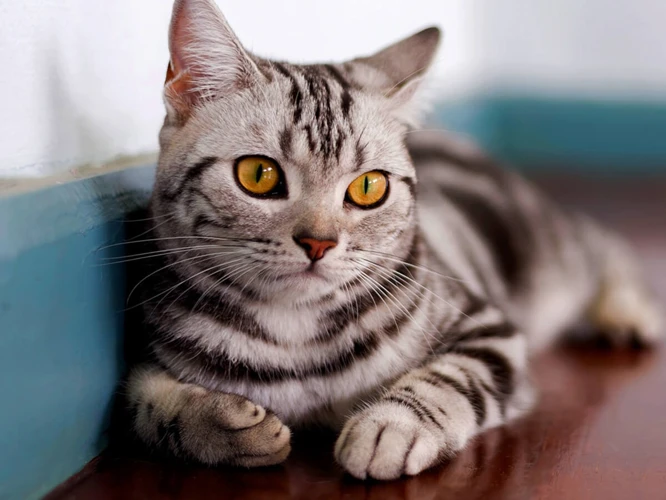
Understanding the various factors that play a vital role in determining the life expectancy of cats is essential for every cat parent. Factors such as nutrition and exercise can significantly affect the longevity and health of a feline friend. Genetics and environmental factors are also important in determining the overall lifespan of a cat. In this article, we will explore the many factors that influence the life expectancy of cats, and provide useful tips on how to extend the lifespan of your beloved American Shorthair cats and other popular cat breeds. So, let’s dive into the different factors that contribute to feline lifespan.
Nutrition and Diet
One of the most crucial factors that affect the life expectancy of American Shorthair cats is their nutrition and diet. Proper nutrition and a balanced diet are important for all cats but particularly important for purebred cats like the American Shorthair, who may have specific dietary requirements.
To ensure optimal health, American Shorthair cats require a diet that is high in protein and low in carbohydrates. A diet rich in protein helps maintain healthy muscles and supports their active lifestyle. On the other hand, a diet high in carbohydrates can lead to obesity and related health problems.
To maintain a healthy weight and body condition, it’s important to focus on portion control. Overfeeding can lead to obesity, which in turn can cause several other health issues such as diabetes, heart disease, and joint problems. It’s also important to ensure that their diet includes essential nutrients and vitamins that support their immune system and overall health.
To provide a balanced diet to your American Shorthair cat, consider feeding them a blend of high-quality wet and dry food with added supplements such as vitamins and Omega-3 fatty acids. You can also provide them with homemade meals using high-quality, fresh ingredients that are safe for cat consumption.
To ensure that your American Shorthair cat has the best nutrition and diet possible, consult with a veterinarian. They can provide valuable insight into your cat’s specific nutritional needs and recommend particular products based on your cat’s age, weight, and health conditions.
Providing your American Shorthair cat with proper nutrition and a balanced diet is one of the most important things you can do to extend their life expectancy and ensure they live a healthy and happy life. By following these tips, you’ll be able to keep your American Shorthair cat in top condition for years to come.
For more tips on factors that influence the life expectancy of American Shorthair cats, check out our article on Factors that Influence Life Expectancy in American Shorthair Cats.
Weight Management and Exercise
Maintaining a healthy weight and providing regular exercise is crucial in extending the lifespan of any cat breeds, including American Shorthair cats. According to a recent study, obesity can reduce a cat’s lifespan by as much as 2.5 years.
Weight Management: One way to manage the weight of American Shorthair cats is to monitor their food intake. Feeding them high-quality cat food that is appropriate for their age, weight, and activity level can help maintain a healthy weight. It’s also best to avoid feeding them table scraps that may contain ingredients harmful to cats. Providing them with small meals throughout the day rather than one big meal can help prevent binge eating.
To help track their weight, it’s recommended to weigh American Shorthair cats regularly and record their progress. This will enable you to keep an eye on any weight fluctuations and adjust their diet accordingly. If necessary, consult with a veterinarian to develop an appropriate weight management plan. They can also rule out any underlying health conditions that may be causing weight gain or loss.
Exercise: Regular exercise is crucial in maintaining a healthy weight and promoting overall health in American Shorthair cats. Indulging them in interactive playtime with toys or setting up a climbing tree can encourage exercise. It’s essential to remember that, like humans, cats also require regular physical activity for their wellbeing.
The table below summarizes the tips for weight management and exercise of American Shorthair cats:
| Weight Management | Exercise |
|---|---|
| Choose high-quality cat food | Encourage interactive playtime with toys |
| Avoid feeding table scraps | Set up a climbing tree |
| Provide small meals throughout the day | Designate a playtime routine |
| Monitor their weight regularly | Try to engage them in physical activity daily |
| Consult with a veterinarian to develop a weight management plan | Choose age-appropriate toys and activities |
By following these recommendations, you can help ensure that your American Shorthair cat maintains a healthy weight and gets the exercise they need to live a long and happy life. However, it is essential to remember that obesity could lead to various health problems, which can ultimately affect their lifespan. Any concerns regarding your cat’s health and weight should be promptly addressed by a veterinarian. To learn more about the potential health problems that can lower the life expectancy of American Shorthair cats, read our blog post on health problems of American Shorthair cats. For nutrition tips specifically for Shorthair cats, check out our article on nutrition tips for Shorthair cats.
Genetics
Genetics play a vital role in the life expectancy of cats. Inherited diseases can affect the length and quality of a cat’s life. Some breeds are prone to certain genetic conditions that can significantly shorten their lifespan. For instance, Persian cats are susceptible to polycystic kidney disease (PKD), which can cause renal failure and lead to a shortened life expectancy.
On the other hand, some cat breeds are less prone to genetic conditions and have a better chance of living a longer life. For example, the Sphynx has fewer genetic health issues, making them less likely to develop life-threatening diseases.
Below is a table that shows some of the common genetic diseases that affect popular cat breeds and how they impact life expectancy.
| Cat Breed | Genetic Disease | Impact on Life Expectancy |
|---|---|---|
| Persian | Polycystic Kidney Disease (PKD) | Shortened lifespan due to increased risk of renal failure |
| Maine Coon | Hypertrophic Cardiomyopathy (HCM) | May develop heart issues in adulthood, potentially leading to a shortened life expectancy |
| American Shorthair | Feline Lower Urinary Tract Disease (FLUTD) | May experience chronic urinary issues, but with proper care and management, can have a normal lifespan |
| Ragdoll | Hypertrophic Cardiomyopathy (HCM) | May develop heart issues in adulthood, potentially leading to a shortened life expectancy |
| Siamese | Amyloidosis | May develop liver and kidney issues, potentially leading to a shortened life expectancy |
It’s important to note that not all cats with genetic diseases will experience a shortened lifespan. Proper care and management can help extend a cat’s life, even if they have a genetic condition. While genetics are a factor in a cat’s life expectancy, it’s not the only one. A combination of proper nutrition, weight management, exercise, veterinary care, and environmental factors all play a role in a cat’s overall health and lifespan.
Environmental Factors
Various environmental factors can significantly impact a cat’s life expectancy. These factors include climate, air quality, access to clean water and food, as well as exposure to toxic substances. Let’s take a closer look at each of these factors and how they affect your cat’s health.
Climate: Climate can greatly influence a cat’s health and, therefore, its lifespan. For example, cats that live in extremely hot or cold climates may be more susceptible to heatstroke or hypothermia. On the other hand, cats living in mild to moderate climates may have fewer health risks and may live longer.
Air Quality: Poor air quality can negatively impact a cat’s respiratory system and put a strain on its overall health. Cats living in areas with high levels of pollution or secondhand smoke may be at an increased risk of respiratory infections, asthma, and other health problems. It is essential to create a clean and healthy living environment for your cat.
Access to Clean Water and Food: Providing your cat with clean and fresh water and food is essential for maintaining its health and extending its life expectancy. Your cat’s diet should consist of high-quality and nutrient-rich food that meets its dietary needs. Additionally, make sure to keep your cat’s water bowl clean, and ensure that it has access to fresh water regularly.
Exposure to Toxic Substances: Cats can be exposed to toxic substances in various ways, such as ingesting poisonous plants or grooming themselves after coming into contact with harmful chemicals. These toxins can cause severe health issues and, in some cases, even be fatal. It is crucial to keep your home and your cat’s environment free of any toxic substances.
To summarize, environmental factors can significantly impact your cat’s life expectancy. It is vital to provide your cat with a healthy and safe living environment to prevent any negative health consequences. By taking care of your cat’s environmental needs, you can help extend its lifespan and ensure that it lives a happy and healthy life.
| Environmental Factors | Impact on Life Expectancy |
|---|---|
| Climate | Extreme temperatures can increase health risks and decrease life expectancy |
| Air Quality | Poor air quality can lead to respiratory infections and health problems |
| Access to Clean Water and Food | Provides essential nutrients for maintaining a cat’s health and extending its lifespan. |
| Exposure to Toxic Substances | Toxic substances can cause severe health issues and even be fatal |
Cat Breeds with Longest Life Expectancy
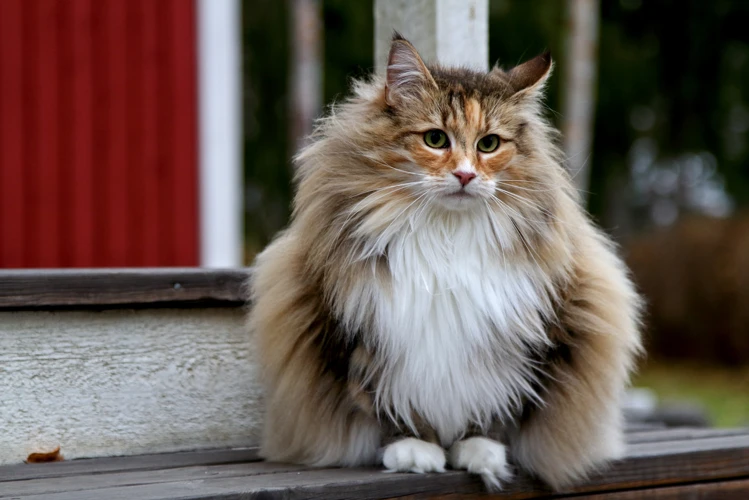
As cat owners, one of our greatest concerns is keeping our furry friends healthy and happy for as long as possible. While genetics, nutrition, and care all play an important role in determining a cat’s life expectancy, the breed of the cat also has an impact. Some breeds have longer lifespans than others, and it’s important to take this into consideration when choosing a new feline friend. So, let’s take a look at some of the cat breeds with the longest life expectancy and what makes them stand out.
Sphynx
The Sphynx breed of cat has rightfully earned its place as one of the longest living cat breeds, with an average life expectancy of 12 to 16 years. These charming felines have a unique hairless appearance due to a genetic mutation that affects their coat. However, despite their lack of fur, they still require proper grooming to maintain their skin and keep it healthy.
Factors that contribute to the Sphynx’s long lifespan include:
- Good health and genetics: Sphynx cats come from a relatively small gene pool, making it easier for breeders to identify and remove any undesirable health issues from their lines. This has contributed to the breed’s overall good health and longevity.
- Diet and nutrition: Proper nutrition is essential for any cat’s health, but it is especially important in hairless breeds like the Sphynx. Their unique biology requires a high-quality, protein-rich diet to maintain their energy levels and support their skin health.
- Lifestyle and environment: Sphynx cats are highly social creatures that thrive on attention and affection from their owners. An interactive and stimulating environment, combined with plenty of playtime and exercise, can ensure that they remain healthy and happy well into their senior years.
It is important to note that while the Sphynx has a longer than average life expectancy, they are still prone to certain health issues like any other breed of cat. Regular veterinary check-ups and preventative care can help identify and address any potential health problems before they become more serious.
In addition to proper health management, providing your Sphynx with plenty of love and attention can also contribute to a longer and happier life. These furry (well, hairless) friends are known for their loyal and affectionate personalities, so be sure to give them plenty of cuddles and playtime to keep them happy and healthy for years to come.
Javanese
One of the cat breeds that is known for its long lifespan is the Javanese. This breed is a type of Siamese cat, but with a longer coat that requires more grooming. They are also known for being intelligent and sociable cats.
Characteristics of Javanese cats:
- Javanese cats have a medium-sized, muscular body that is sleek and athletic in appearance.
- Their coat is long and silky, and comes in a variety of colors including seal, blue, chocolate, and lilac.
- They have bright blue eyes that are almond-shaped, and have a triangular head with large ears.
Factors that influence the lifespan of Javanese cats:
- Nutrition: Providing Javanese cats with a balanced and nutritious diet is essential to ensuring they live a long and healthy life. Feed them high-quality protein sources and limit their intake of processed foods.
- Weight Management and Exercise: Javanese cats are active and agile, so regular exercise is important to maintaining their health. Play with them regularly and provide opportunities for physical activity.
- Genetics: Like all animals, genetics play a role in determining the lifespan of Javanese cats. Breeders should ensure that they are breeding from healthy cats with no genetic health issues before mating.
- Environmental Factors: Providing Javanese cats with a clean living environment that is free from toxins and harmful substances is important to their overall health and lifespan.
Javanese cats are a breed that can live a long and healthy life with proper care and attention to their needs. By ensuring they receive proper nutrition, exercise, and a clean environment, they can thrive and bring joy to their owners for many years.
Ragdoll
The Ragdoll cat breed is one of the longest-living cat breeds with a life expectancy of approximately 15 to 20 years. This breed is known for its gentle and affectionate personality, making them popular pets. Their docile and easy-going temperament makes them well-suited for families with children and other pets, and they have a reputation for being excellent indoor cats.
One factor that may contribute to the Ragdoll’s longer life expectancy is their overall health. This breed is generally free of serious health issues, and they are not prone to developing certain genetic disorders that can shorten the lifespan of other cat breeds. Additionally, Ragdolls have a stocky and muscular build, which may provide them with greater resilience against injury and illness.
Another possible factor contributing to the Ragdoll’s longevity is their diet and nutrition. Providing a high-quality diet that is rich in protein and other essential nutrients is crucial for maintaining a cat’s health and wellbeing. Ragdolls require a balanced diet that provides them with all the necessary vitamins and minerals to stay healthy and live a long life.
Regular exercise is also essential for keeping Ragdoll cats healthy and extending their lifespan. While Ragdolls may not be as active as some other cat breeds, they still benefit from playtime and exercise. Engaging in regular playtime activities can help prevent obesity and keep their joints and muscles strong and healthy.
Ragdoll cats are an excellent choice for families looking for a long-living, affectionate, and low-maintenance pet. By providing proper care such as a healthy diet, regular exercise, and routine veterinary checkups, they can live a long and fulfilling life of up to 20 years.
Cat Breeds with Average Life Expectancy
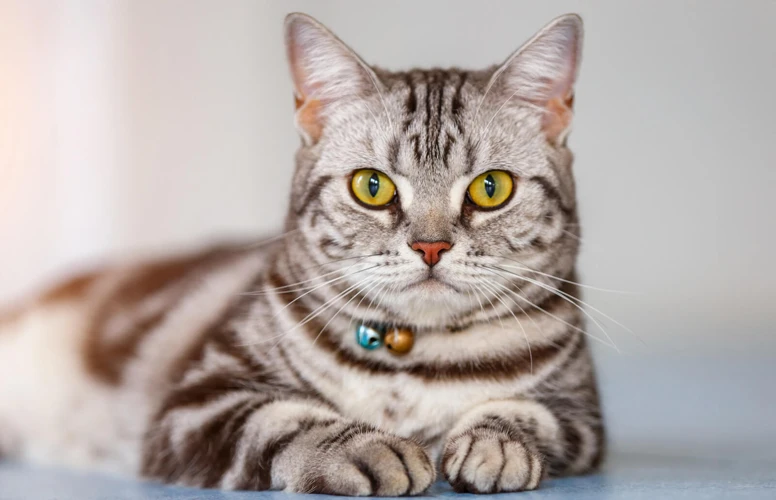
When it comes to the life expectancy of cats, breed does play a role. While some cat breeds are known for their longevity, others have a shorter life span. However, there are a number of factors that can influence life expectancy beyond genetics, such as nutrition and environmental factors. In this section, we’ll take a look at a few cat breeds that fall within the average life expectancy range, including the Maine Coon, Persian, and Siamese.
Maine Coon
The Maine Coon is a popular and beloved breed among cat owners, known for their large size and long, fluffy coats. When it comes to life expectancy, Maine Coons have an average lifespan of 12-15 years. Many factors can contribute to their lifespan, including genetics, healthcare, and lifestyle. Here are some important considerations to keep in mind if you own or are considering owning a Maine Coon:
- Genetics: As with any purebred animal, genetics plays a big role in determining the lifespan of a Maine Coon. Responsible breeders work to ensure that their cats are as healthy as possible, reducing the risk of inherited health issues that can impact lifespan. Regular visits to the vet can help identify any potential health issues early on, allowing for prompt treatment.
- Healthcare: Regular vet checkups, vaccinations, and preventative care are all essential to keeping your Maine Coon healthy and extending their lifespan. Common health issues for Maine Coons include hip dysplasia, heart disease, and kidney disease. Early detection and treatment can help manage these conditions and extend the life of your cat.
- Weight Management: Maine Coons are prone to obesity, which can reduce their lifespan and lead to other health problems. Feeding a balanced diet, monitoring their intake, and providing regular exercise can help prevent obesity and keep your Maine Coon healthy.
- Environment: Creating a safe and comfortable living environment for your Maine Coon is important for their overall health and wellbeing. Providing a clean litter box, plenty of fresh water, and appropriate toys and scratching posts can all contribute to a longer lifespan.
These considerations are important for any cat owner, but can be particularly relevant for owners of Maine Coons. By providing proper care and attention, you can help your Maine Coon live a long, happy life.
Persian
When it comes to cats’ life expectancy, Persian cats are one of the breeds that have an average lifespan. These cats are known for their distinctive long, fluffy fur and flat faces, which require some extra grooming to maintain.
Diet and Nutrition: Feeding your Persian cat a healthy, balanced diet is vital to ensure a long and healthy life. These cats are known to have a tendency to gain weight, so it’s important to feed them a portion-controlled diet. Make sure that they get all the essential nutrients they need, including protein, vitamins, and minerals.
Weight Management and Exercise: Due to their lazy nature, Persian cats are prone to obesity, which can lead to a variety of health problems. To keep them fit and healthy, it’s important to engage them in regular exercise such as playing with them, providing climbing structures, and giving them toys to play with.
| Factors | Persian Cats |
|---|---|
| Life Expectancy | Average of 12-18 years |
| Diet and Nutrition | Portion-controlled, balanced diet rich in protein, vitamins, and minerals |
| Weight Management and Exercise | Regular exercise, engagement in play, climbing structures, and toys to keep them fit and healthy |
| Genetics | Prone to kidney and heart disease due to their flatter faces and skull structure |
| Environmental Factors | Indoor cats that thrive in quiet, calm environments |
Genetics: Persian cats are prone to certain health issues, particularly kidney and heart disease. This is due to their flat faces and skull structure, which can cause respiratory problems and other health issues. Good breeding practices and regular veterinary checkups can help catch and treat these issues early on.
Environmental Factors: Persian cats are indoor cats and thrive in quiet, calm environments. They prefer a clean litter box and need a calm and stress-free environment for optimal health.
By providing your Persian cat with a healthy, well-balanced diet, engaging them in regular exercise and play, and taking them for regular veterinary checkups, you can help extend their life expectancy to its fullest potential.
Siamese
The Siamese cat breed is a popular choice for many cat lovers, known for their distinctive appearance and vocal personality. They have an average life expectancy of around 12-15 years, which is similar to other breeds in the same category. However, it’s important to note that lifespan can vary depending on a variety of factors, including genetics and lifestyle.
Nutrition: Proper nutrition is crucial for ensuring a long and healthy life for Siamese cats. This breed is known to have a sensitive digestive system, so it’s important to feed them high-quality cat food that is specifically formulated for their needs. Avoid feeding them human food or foods that are high in fat, sugar or sodium, as these can cause digestive issues and lead to obesity which can shorten their lifespan.
Weight Management and Exercise: Siamese cats are active and playful by nature, and it’s important to provide them with plenty of opportunities for exercise and play to help maintain a healthy weight. You can engage them in interactive play, such as chasing a toy or participating in agility training. This will help keep them active and healthy, and help to avoid obesity-related health problems.
Genetics: Genetic factors play a role in predisposing Siamese cats to certain health issues such as respiratory problems, dental issues, and heart disease. Regular veterinary check-ups, proper nutrition, and preventive care can help manage and reduce the risks of these health issues.
Environmental Factors: Siamese cats can be sensitive to environmental changes, so it’s important to provide them with a safe and comfortable living environment. Make sure they have access to fresh water, clean litter boxes, and comfortable sleeping areas. Keep your home free from toxins and hazards, and make sure they have access to fresh air and natural light.
Siamese cats have an average life expectancy that can be influenced by factors such as nutrition, weight management, genetics, and environmental factors. By providing them with proper care and attention, you can help ensure a long and healthy life for your beloved pet.
Cat Breeds with Shorter Life Expectancy
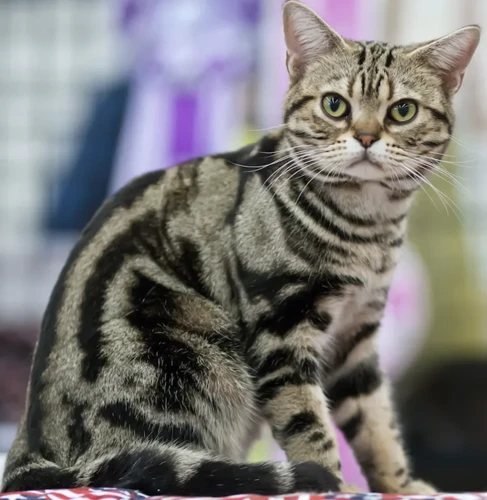
It can be difficult to accept the fact that our beloved feline companions may not be with us for as long as we’d like them to be. Unfortunately, certain cat breeds are more predisposed to conditions that affect their life expectancy. These breeds may require more specialized care and attention in order to ensure they live as long and healthy of a life as possible. Here, we will take a closer look at several popular cat breeds that have a shorter life expectancy than others.
Manx
The Manx cat breed is known for its lack of tail, which is the result of a genetic mutation. While this trait is unique and sought after, it unfortunately contributes to the breed’s shorter than average life expectancy. The Manx breed has an average lifespan of 8-14 years, which is shorter than many other popular cat breeds.
Several factors influence the lifespan of Manx cats. One of the main concerns is spinal problems that can arise due to the lack of a tail. This can lead to issues such as incontinence, difficulty walking or jumping, and even paralysis. Another factor is a genetic predisposition to certain diseases such as feline hypertrophic cardiomyopathy, which can lead to heart failure.
While the Manx breed may have its health challenges, there are ways to prolong the lifespan of these unique cats. One way is to provide a balanced and nutritious diet that meets their specific needs. It is also important to keep them at a healthy weight and encourage regular exercise to maintain their overall health.
Here is a table comparing the average lifespan of Manx cats with other popular cat breeds:
| Breed | Average Lifespan |
|---|---|
| Manx | 8-14 years |
| Persian | 10-17 years |
| Maine Coon | 10-13 years |
| Siamese | 12-20 years |
| Russian Blue | 10-16 years |
As you can see, the average lifespan of Manx cats is shorter than many other popular cat breeds. However, with proper care and attention, Manx cats can still live happy and healthy lives. It is important to work with a veterinarian to identify and address any potential health issues early on, and to provide a safe and stimulating environment for your Manx cat to thrive in.
Purebred Burmese
When it comes to the life expectancy of popular cat breeds, the purebred Burmese is one that falls into the category of shorter life expectancy. These cats are known for their muscular build and short, sleek coats. However, like all cats, their lifespan can be impacted by a variety of factors.
Some of the factors that can influence the lifespan of purebred Burmese cats include:
- Genetics: Genetics play a significant role in the lifespan of most animals, and purebred Burmese cats are no exception. They are prone to certain hereditary health issues, such as heart disease and cranial deformities. Responsible breeding practices can help minimize these risks.
- Nutrition: Diet is also a key factor in the lifespan of any cat breed, including the Burmese. Obesity can lead to a variety of health issues that can shorten lifespan, so it’s important to feed these cats a healthy, balanced diet rich in protein and essential nutrients.
- Exercise: Regular exercise is crucial for maintaining a healthy weight and preventing health issues that can shorten lifespan. This is particularly important for the Burmese, which is an active breed that loves to play and explore.
- Veterinary Care: Regular checkups with a veterinarian can help detect health issues early, when they are most treatable. This can help extend the lifespan of a Burmese cat.
- Living Environment: Providing a safe, comfortable living environment for a Burmese cat is another important factor in its lifespan. This includes providing plenty of toys and scratching posts for mental and physical stimulation, as well as minimizing exposure to potential hazards such as toxic plants and dangerous household items.
It’s worth noting that while the purebred Burmese is considered a breed with a shorter lifespan, individual cats can still live long and healthy lives with proper care and attention. By addressing the above factors and providing a loving, nurturing environment, owners can help ensure their Burmese cats live happy, healthy lives for as long as possible.
American Shorthair
American Shorthair cats are beloved by many as friendly and easygoing pets. They’re also known for their ruggedness and good health, but how does their life expectancy stack up against other popular cat breeds? Let’s take a closer look.
To begin, we can compare the average lifespan of American Shorthair cats with other breeds. According to the American Shorthair Breed Council, these cats typically live for 15-20 years. This is quite a long lifespan for a domestic cat and is largely due to their overall hardiness.
In comparison, the lifespan of the Persian breed, which is known for its long, fluffy coat and gentle personality, is typically between 12 and 16 years. Siamese cats, known for their distinctive blue eyes and vocal personalities, have a lifespan of 8-12 years on average. Meanwhile, British Shorthair cats, which are recognized for their plush coat and round features, typically live for 12-17 years.
To further compare the attributes of these different cat breeds, we can create a table to outline some of their distinguishing characteristics and life expectancies.
| Cat Breed | Average Lifespan | Distinguishing Characteristics |
|---|---|---|
| Persian | 12-16 years | Long, fluffy coat, docile personality |
| Siamese | 8-12 years | Distinctive blue eyes, vocal personality |
| British Shorthair | 12-17 years | Round features, plush coat |
| American Shorthair | 15-20 years | Rugged, good health, friendly and easygoing personality |
As we can see, American Shorthair cats have an impressive lifespan compared to other popular breeds, and their ruggedness and good health are likely contributing factors to this longevity. Of course, as with all cats, various environmental and lifestyle factors can play a role in their individual life expectancies.
In the next section, we’ll take a closer look at some of the specific factors that can influence the life expectancy of American Shorthair cats.
British Shorthair
One popular cat breed with a relatively shorter life expectancy is the British Shorthair. While the average life expectancy for this breed is around 12-14 years, some cats are known to live up to 20 years with proper care and attention.
One of the factors that can affect the life expectancy of British Shorthair cats is their weight. These cats can be prone to obesity, which can lead to a variety of health issues such as diabetes, joint problems, and heart disease. It is important to ensure that British Shorthairs maintain a healthy weight through a balanced diet and regular exercise.
Genetics also play a role in the life expectancy of British Shorthairs. Like many other purebred cats, this breed can be prone to hereditary health issues such as hypertrophic cardiomyopathy (HCM), a common heart disease. It is important to choose a reputable breeder who conducts genetic testing on their breeding cats to reduce the risk of passing on these health conditions to their offspring.
In terms of environmental factors, British Shorthairs can be sensitive to changes in temperature and humidity. These cats prefer a stable environment with a moderate temperature and good air circulation. Additionally, providing them with a clean litter box, fresh water, and a comfortable bed can help reduce stress and improve their overall health.
While British Shorthair cats may have a slightly shorter life expectancy compared to some other breeds, proper care and attention can greatly improve their quality and length of life.
Now, let’s take a look at a table comparing the average life expectancy of British Shorthairs with other popular cat breeds:
| Cat Breed | Average Life Expectancy |
|---|---|
| Sphynx | 15-20 years |
| Maine Coon | 12-15 years |
| Persian | 12-15 years |
| Siamese | 8-12 years |
| Manx | 8-14 years |
| Purebred Burmese | 10-16 years |
| American Shorthair | 15-20 years |
| British Shorthair | 12-14 years |
As we can see from the table, British Shorthairs have an average life expectancy similar to Persian and Maine Coon cats, while Sphynx and American Shorthairs tend to live longer.
Factors that Affect the Life Expectancy of American Shorthair Cats
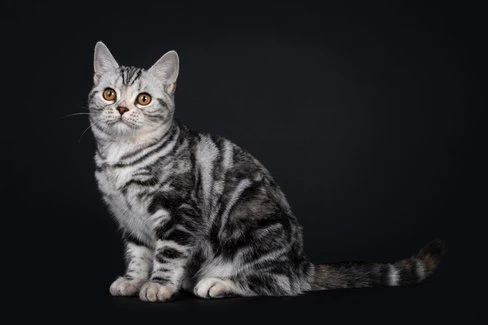
The American Shorthair breed of cat is beloved for their friendly disposition, affectionate nature, and striking good looks. As a pet owner, you want to ensure that your companion enjoys a healthy, happy life for as long as possible. To accomplish this goal, it is important to understand the factors that can influence the life expectancy of American Shorthair cats. By paying close attention to the elements we will discuss in this section, you can develop a plan to increase your cat’s chances of living a long and fulfilling life.
General Care and Health Management
Taking good care of an American Shorthair cat is crucial for a long and healthy life. Here are a few important things to keep in mind for general care and health management:
- Regular Checkups: It is important to take your American Shorthair to the vet for regular checkups. This helps in early detection of any health issues, which can be treated promptly and effectively. Annual checkups are recommended for cats of all ages, and senior cats should be seen by a vet twice a year.
- Dental Care: Dental problems can be a source of pain and discomfort for cats. Brushing your cat’s teeth regularly and providing dental treats can help prevent dental issues. However, if you notice your cat has bad breath or difficulty eating, take them to the vet for a dental checkup.
- Parasite Prevention: Parasites such as fleas, ticks, and worms can cause serious health issues for cats. Using flea and tick preventatives and administering regular deworming medication can help prevent parasitic infections.
- Age-Appropriate Care: As cats age, their needs change. Senior cats may have difficulty grooming themselves and may require assistance with grooming. They may also require special diets to help with age-related health issues. Providing age-appropriate care can help your American Shorthair live a long and healthy life.
- Stress Management: Stress can be a source of health problems for cats. Providing them with a stress-free environment by avoiding sudden changes, providing a quiet place to retreat, and by playing with and interacting with them regularly can help minimize stress.
By following these general care and health management tips, you can help ensure your American Shorthair leads a long and healthy life.
Breeding and Genetics
The breeding and genetics of American Shorthair cats can play a significant role in determining their life expectancy. Breeding practices that prioritize the health and genetic diversity of the cat can lead to a longer lifespan.
Responsible Breeding Practices
Responsible breeders will conduct appropriate health screenings before breeding their cats to ensure that they are free from any genetic diseases that could be inherited by their offspring. By doing so, they can ensure that their cats are producing healthy kittens that will not suffer from any genetic conditions.
Genetic Diversity
Maintaining genetic diversity is also important to the overall health of the breed. Inbreeding can lead to genetic diseases and health issues in offspring, which can shorten their lifespan. Responsible breeders will prioritize genetic diversity when selecting cats to breed.
Health Testing
Health testing is important not just for the breeding cats, but also for their offspring. Kittens should be tested for any inherited genetic conditions and other health issues. By taking this step, breeders can ensure that they are breeding healthy cats that have the best chance for a long and healthy life.
To illustrate, here is a table outlining some of the most common genetic disorders found in American Shorthair cats that responsible breeders should screen for:
| Genetic Disorder | Description |
|---|---|
| Hypertrophic Cardiomyopathy (HCM) | A heart disease that causes the walls of the heart to thicken, making it difficult for the heart to function properly. |
| Polycystic Kidney Disease (PKD) | A genetic condition that causes cysts to form in the kidneys, which can lead to kidney failure and shortened lifespan. |
| Pyloric Stenosis | A genetic disorder that affects the stomach and causes vomiting and weight loss. |
By practicing responsible breeding and prioritizing the health and genetic diversity of their cats, breeders can help ensure that American Shorthair cats live long and healthy lives.
Environmental and Lifestyle Factors
The life expectancy of American Shorthair cats can also be influenced by various environmental and lifestyle factors. These factors can either extend or shorten their lifespan. Here are some important environmental and lifestyle factors to consider:
- Indoor vs Outdoor living: Outdoor living exposes cats to various dangers such as accidents, getting lost, predator attacks, and exposure to diseases. On the other hand, indoor living can keep cats safe from such risks, thereby extending their lifespan.
- Exposure to toxins: American Shorthair cats can get exposed to toxins such as household chemicals, plants, and foods. Exposure to these toxins can lead to various health issues, some of which can be fatal. It’s important to keep cats away from such toxins to avoid shortening their lifespan.
- Cleanliness: Environmental cleanliness is important for the health and wellbeing of American Shorthair cats. A dirty living environment can expose cats to various diseases and infections, which can shorten their lifespan. It’s important to regularly clean their living spaces and provide a clean litter box.
- Lifestyle: An unhealthy lifestyle can also shorten the lifespan of American Shorthair cats. Unhealthy habits such as overfeeding, lack of exercise, and smoking in the household can lead to various health issues such as obesity, heart diseases, and cancer. It’s important to maintain a healthy lifestyle for both human and feline household members.
Taking into account these environmental and lifestyle factors can help extend the lifespan of American Shorthair cats. Pet owners should aim to create a safe and clean living environment, feed a nutritious diet, and incorporate exercise into their cat’s daily routine. Regular visits to the veterinarian and preventative care can also help ensure the wellbeing of these beloved feline companions.
Ways to Extend the Life of American Shorthair Cats
If you are a proud owner of an American Shorthair cat, you would naturally want to ensure they live a long and healthy life. Fortunately, there are several ways you can extend the lifespan of your feline friend by promoting a healthy and active lifestyle. From providing a balanced diet to scheduling regular vet check-ups and creating a safe living environment, incorporating certain practices can make a significant difference. In this section, we will explore some effective ways to enhance the longevity of American Shorthair cats and ensure they lead a happy and fulfilling life.
Proper Nutrition
A proper diet and nutrition are essential for extending the life of American Shorthair Cats. A healthy diet can strengthen the immune system, prevent chronic diseases, and promote overall wellness. Here are some important points to keep in mind when it comes to your cat’s nutrition:
- Quality ingredients: The quality of the food you give your cat is important. Choose brands that use high-quality protein and avoid fillers and artificial preservatives. Look for food formulas that meet the nutritional requirements set by the Association of American Feed Control Officials.
- Protein: American Shorthair Cats require high protein diets. Choose food that contains protein from animal sources like chicken, turkey, or fish. Avoid plant-based protein sources like soy and peas.
- Fats: Fats are an important source of energy for cats. Choose food that contains moderate levels of healthy fats, such as those found in fish oil and chicken fat. Avoid food that contains excess amounts of saturated and trans fats.
- Carbohydrates: Carbohydrates are not essential in a cat’s diet, but they do provide energy. Look for food formulas that use complex carbohydrates like sweet potatoes or brown rice instead of simple carbohydrates like corn and wheat.
- Vitamins and minerals: Your cat’s diet should include a balance of vitamins and minerals to support overall health. If you are unsure if your cat is consuming the necessary amount of vitamins and minerals, consult with your veterinarian.
- Water: Cats require access to clean, fresh water at all times. Make sure to provide your cat with plenty of water to help them stay properly hydrated.
By following these guidelines and feeding your American Shorthair Cat with a high-quality diet, you can help increase their lifespan and improve their overall wellbeing. Don’t hesitate to consult with your veterinarian for personalized advice on your cat’s nutritional needs.
Regular Exercise and Weight Management
Regular exercise and weight management are crucial for maintaining the health and well-being of American Shorthair cats. Obesity is a major concern for cats as it can lead to various health issues such as diabetes, heart problems, and joint pain. It’s essential to keep your American Shorthair cat at a healthy weight by monitoring their diet and giving them enough exercise.
Here are some ways to help with weight management:
- Measure their food portions: It’s easy to overfeed your cat if you are not measuring their food portions. Ask your vet for guidance on the right amount of food your cat should be eating based on their age and weight.
- Feed them a high-quality diet: Provide your cat with a high-quality diet that meets their nutritional needs and is appropriate for their age and activity level. Avoid giving them table scraps, which can be high in calories and unhealthy for them.
- Provide them with plenty of water: Keep your American Shorthair cat hydrated by providing them with plenty of fresh and clean water. Proper hydration also helps with digestion and can aid in weight management.
Regular exercise is also important for your American Shorthair cat’s health:
- Play with your cat: Engage in interactive play sessions with your cat, such as using a laser pointer or a feather wand. This activity not only helps with weight management but also provides mental stimulation and strengthens the bond between you and your cat.
- Provide them with toys: Provide your cat with a variety of toys to keep them active and interested. Toys such as balls, catnip mice, and scratching posts can help with weight management and provide mental and physical stimulation.
- Create a safe outdoor space: If you have a safe outdoor space, consider allowing your cat to spend time outside under supervision. Outdoor play stimulates exercise and provides mental stimulation as they play and explore nature.
Incorporating regular exercise and weight management into your American Shorthair cat’s routine can improve their overall health and extend their lifespan. By providing them with a healthy diet, ample water, and regular exercise, you can help them maintain a healthy weight and prevent various health issues.
Veterinary Care and Preventative Checkups
Keeping up with regular veterinary care and preventative checkups is an essential part of extending the life expectancy of American Shorthair cats. Veterinary care involves taking your cat to see a professional veterinarian to check on their overall health and wellness. During these visits, the vet will evaluate your cat’s physical and emotional well-being, check for any signs of illnesses, and provide necessary preventive care.
Preventative checkups help identify potential health issues and ensure early detection and treatment of diseases. Vaccinations and parasite control play a significant role in keeping cats healthy. The vet will also check your cat’s teeth and gums, eyes, ears, and skin to detect any issues that need attention.
Cats should receive regular checkups, which will depend on their age and health status. For most cats, this is typically once a year. However, senior cats or those with pre-existing health conditions may require more frequent visits.
Aside from regular checkups, it’s vital to note and schedule appointments if you notice any new symptoms or changes in your cat’s behaviour. Some warning signs that you should take notice of include loss of appetite, excessive thirst, changes in bathroom habits, or sudden weight loss.
In summary, veterinary care and preventative checkups are crucial elements in extending the life expectancy of American Shorthair cats. Regular visits to a certified veterinarian help detect any potential health threats early, allowing prompt treatment and care to keep your cat healthy and happy for years to come.
Important tips for cat owners:
- Regular veterinary care and preventative checkups should never be skipped, and any health changes in your cat should be addressed promptly.
- Ensure your cat is up to date on their vaccinations and parasite control.
- Feed your cat a balanced and nutritious diet.
- Provide adequate exercise and weight management to ensure your cat stays at a healthy weight.
- Create a safe living environment for your cat, free from any potential hazards that could cause harm or injury.
Creating a Safe Living Environment
As a cat owner, it is important to ensure that your American Shorthair cat is safe and secure in their living environment. Creating a safe living environment for your feline friend will not only improve their quality of life, but also help to extend their life expectancy. Here are some tips on how to create a safe living environment for your American Shorthair cat:
- Secure Indoor Spaces: Indoor cats require a safe and secure living space, where they can play, exercise, and relax. Make sure to secure your windows and doors to prevent your cat from escaping or falling from high places.
- Toxic-Free Spaces: Cats are sensitive to toxic substances, which can affect their health and even be fatal. Keep your home clean of poisonous plants, chemicals, and other hazardous substances.
- Proper Litter Box Placement: The litter box should be placed in a quiet and private location for your cat to use comfortably. Make sure to clean the litter box regularly to prevent bacterial infections and other health problems.
- Cat-Proofing Your Home: Cats are naturally curious creatures, which can make them prone to accidents and injuries. Keep your home cat-proof by keeping sharp objects, small items, and electrical cords out of reach.
- Providing Scratching Posts and Climbing Perches: American Shorthair cats are known for their love of climbing and scratching. Provide your cat with scratching posts and climbing perches to prevent them from scratching your furniture and to allow them to exercise their natural instincts.
These are just a few tips on how to create a safe living environment for your American Shorthair cat. By following these tips and providing your cat with a comfortable and safe living environment, you can help to improve their lifespan and overall quality of life.
Conclusion
In conclusion, it’s important to acknowledge that when it comes to the life expectancy of American Shorthair cats, there are a variety of factors that can influence their lifespan. While genetics and breed can play a role, environmental and lifestyle factors such as nutrition, exercise, and general health management can also greatly affect their longevity.
It’s clear that some cat breeds, like the Sphynx, Javanese, and Ragdoll, are known for having longer life expectancies than others. However, this doesn’t mean that American Shorthair cats are doomed to have a shorter lifespan.
By taking proper care of an American Shorthair cat, implementing a healthy diet and exercise regimen, and staying vigilant with preventative check-ups and veterinary care, pet owners can help extend their feline companion’s lifespan and overall well-being.
Ultimately, the most important factor in the life expectancy of any cat is the love and attention they receive from their owners. With care, dedication, and commitment to their health and happiness, American Shorthair cats can live long, happy lives and bring joy to their human companions for years to come.
Frequently Asked Questions
What is the average lifespan of an American Shorthair cat?
The average lifespan of an American Shorthair cat is between 12 and 16 years.
Can the lifespan of a cat be extended through proper care?
Yes, the lifespan of a cat can be extended through proper care, including nutrition, exercise, and regular veterinary checkups.
What are some breeds of cats with longer life expectancies than American Shorthairs?
Some breeds of cats with longer life expectancies than American Shorthairs include Sphynx, Javanese, and Ragdoll cats.
How much does genetics play a role in a cat’s lifespan?
Genetics can play a role in a cat’s lifespan, but it’s not the only factor. Proper care and management can extend a cat’s life regardless of genetics.
What are some environmental factors that can affect a cat’s lifespan?
Environmental factors that can affect a cat’s lifespan include exposure to toxins, accidents, and living conditions that are stressful or dangerous.
How important is weight management in extending a cat’s lifespan?
Weight management is crucial in extending a cat’s lifespan. Obesity can lead to a variety of health issues that can shorten a cat’s life.
What are some ways to create a safe living environment for American Shorthair cats?
Some ways to create a safe living environment for American Shorthair cats include keeping dangerous objects and substances out of reach, providing proper supervision when outdoors, and ensuring a cat’s living space is free of hazards.
Can preventative veterinary care help extend a cat’s lifespan?
Yes, preventative veterinary care can help extend a cat’s lifespan by catching potential health problems early and addressing them proactively.
What are some common health issues that American Shorthair cats may face?
Common health issues that American Shorthair cats may face include dental problems, obesity, diabetes, and kidney disease.
Is it possible for an American Shorthair cat to live longer than 16 years?
Yes, it’s possible for an American Shorthair cat to live longer than 16 years with proper care and management.

